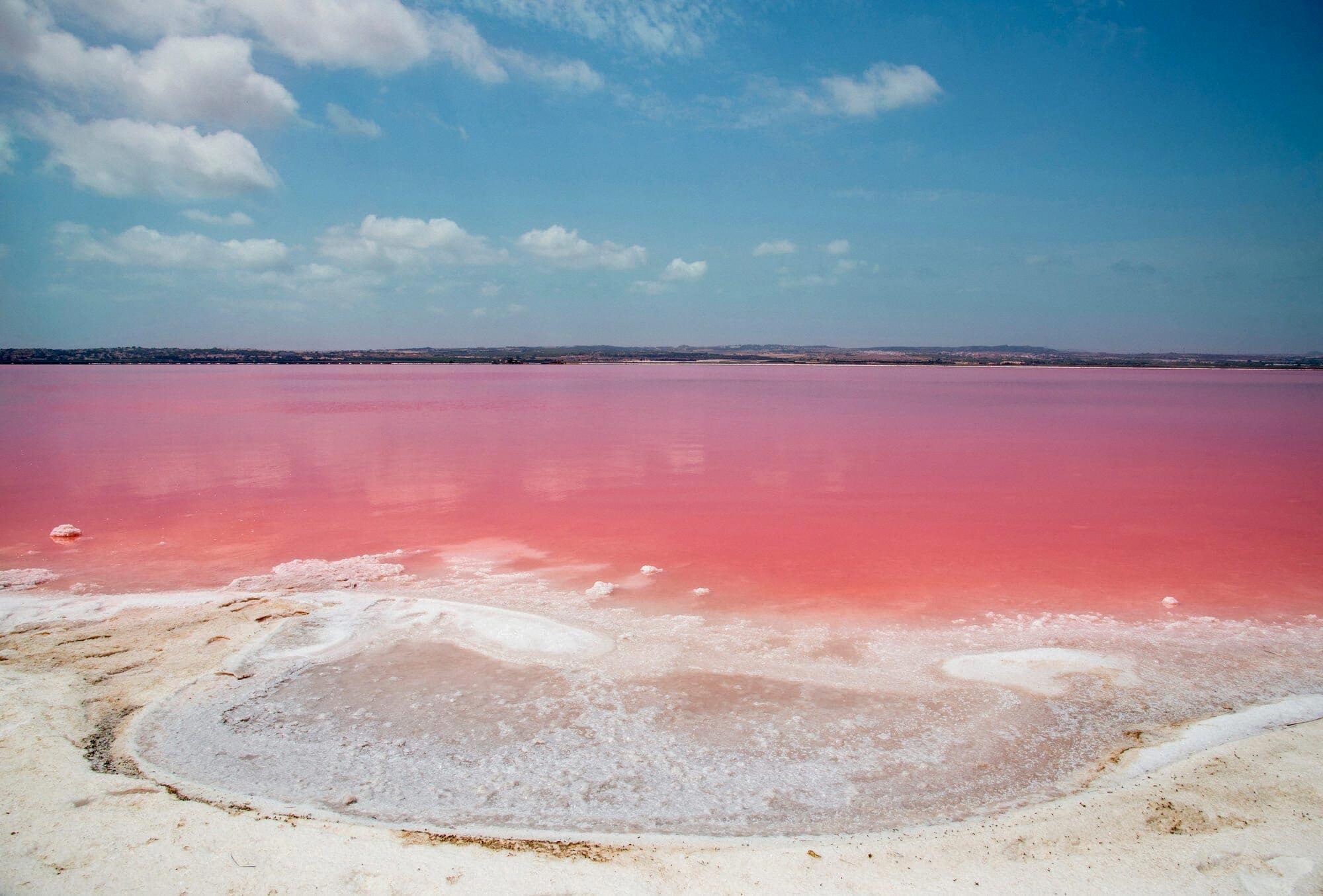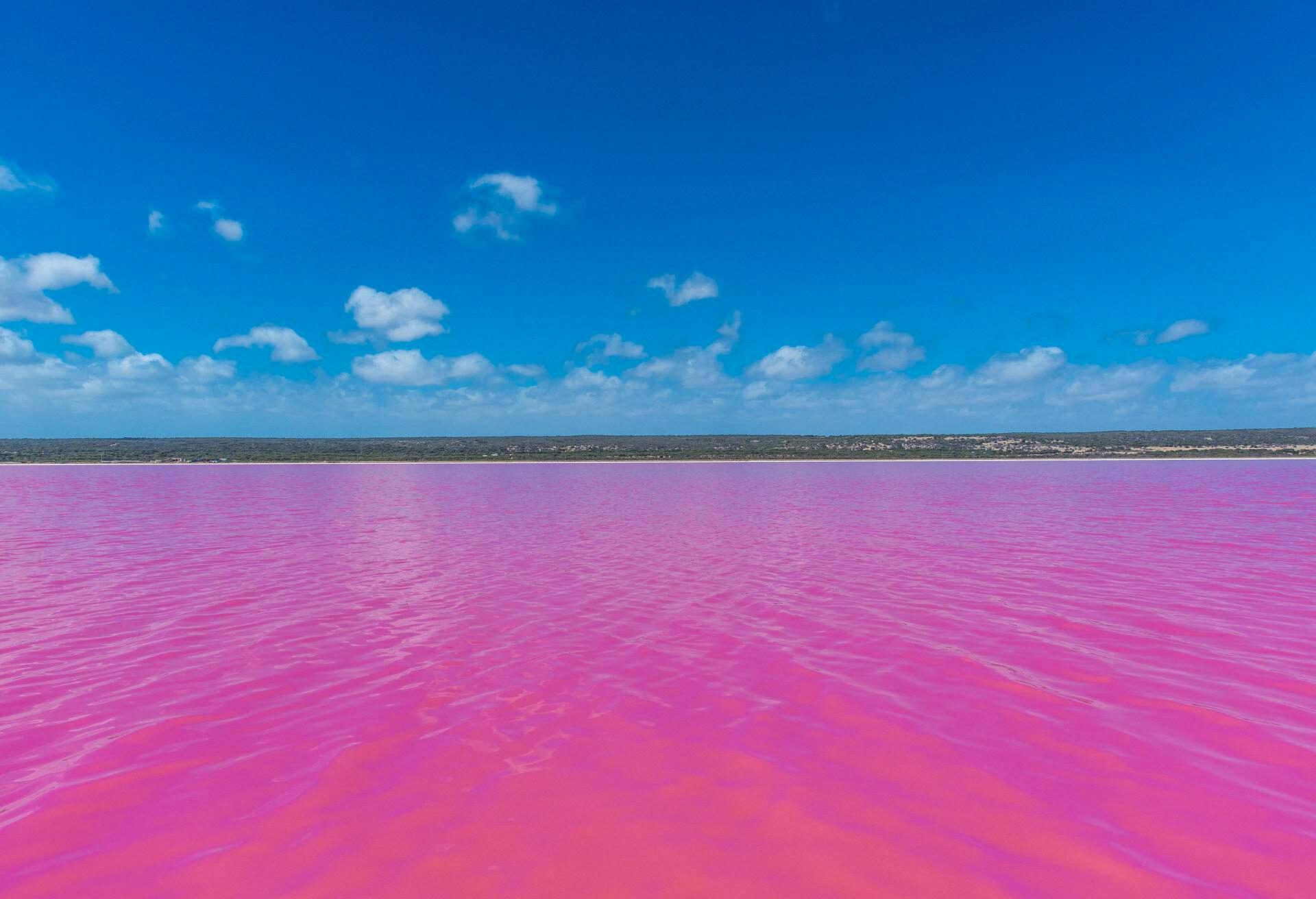Have you ever heard of a pink lake? It’s an incredibly rare phenomenon that occurs when certain bacteria are present in water, giving it a bright pink hue. The most famous exampe of this is Lake Hillier in Australia, which is a popular tourist destination. But the question remains—can you actually swim in a pink lake?
The short answer is yes, but it’s not advisable for a few reasons. For starters, the high salt content makes it unsafe if you have any open wounds or abrasions. Additionally, many areas with pink lakes are considered protected zones, so swimming there could be against the law. And lastly, the water quality can be uncertain, making it risky to jump in and swim around.
But if you’re looking for an incredible experience, swimming in a pink lake can be an unforgettable experience. Much like the Dead Sea, Lake Hillier has such a high salt content that you can easily float on its surface. Plus, if you fly over the lake via helicopter or plane ride, you can get some incredible views of its unique coloration from above!
So while swimming in a pink lake may not be ideal for everyone due to safety and legal reasons, there’s no denying that it’s an amazing natural phenomenon to witness. Just take extra precautions if you decide to take the plunge!
The Reason Why Swimming Is Not Allowed in Pink Lake
Due to the extremely high salt concentration in a pink lake, swimming is not recommended. The lake is usually a deep pink color due to the high levels of salt-tolerant algae and halobacteria in the water. The salinity of a pink lake is typically three to eight times higher than that of seawater, which would be uncomfortable and potentially dangerous for humans to swim in. Additionally, these lakes often lack oxygen, making them very inhospitable for aquatic life and also for human swimmers.

Source: en.wikipedia.org
The Inaccessibility of Australia’s Pink Lake
Unfortunately, due to its remote location on Middle Island off the coast of Western Australia, visiting Lake Hillier is not a feasible option for most people. The only way to view the lake’s beautiful pink hue is from the sky via a helicopter or plane ride over the island, making it impossible to visit without access to such transportation. Additionally, due to its extreme saltiness, swimming in Lake Hillier isn’t possible either.
Swimming in the Pink Lake: What Would Happen?
Swimming in Lake Hillier would be an incredibly unique experience. The lake is famous for its bright pink hue, which is caused by a type of bacteria called Dunaliella salina. The high salt content of the lake also makes it incredibly dense, allowing you to float much more easily than in a normal body of water. In addition, the lake is safe to swim in and free of any dangerous organisms or pollutants. If you decided to take a dip in the pink lake, the only thing you’d have to worry about is the occasional jellyfish!
Swimming in Pink Lake Victoria
Swimming in Lake Victoria is not recommended due to the uncertainty of the water quality. The lake contains high levels of salt, making it risky if you have any abrasions. Additionally, the lake is considered a protected zone or a “look but please don’t pollute” attraction. Therefore, swimming in the lake is highly discouraged and visitors should respect the local regulations.
Is Pink Lake Toxic?
No, the pink lake is not poisonous. The unusual pink hue of the water is caused by a type of algae called Dunaliella salina, which produces a red pigment known as beta-carotene. This algae is actually harmless and even has antioxidant properties that are beneficial to our health. In fact, many people use it as a supplement in their diets. The salt content of the water can also make swimming difficult, so it’s best to observe the lake from dry land.

Source: sunshineseeker.com
The Depth of Pink Lake
Pink Lake is a meromictic lake located at an altitude of 162m. It has a maximum depth of 20m, making it one of the deepest lakes in the world for its small size of 9 hectares. The deep nature of the lake is attributed to its lack of complete circulation, which limits the exchange of oxygen with surrounding waters and thus allows the lake to maintain its greater depths.
Will Pink Lake Regain Its Color?
Yes, the pink lake will be pink again! The color of the lake changes due to a variety of factors, including temperature, salinity, and sunlight. During hot weather, the algae in the water mixes with the salts to turn the lake pink. However, due to changing weather conditions such as rain or cooler temperatures, the pink color can fade away. Luckily, when conditions become favorable once more, this colorful phenomenon can reappear. Most pink lakes don’t stay pink permanently; they change color from a lilac to a bright bubblegum pink throughout the day and in cetain times of the year. So yes, if you wait long enough and visit during favorable conditions you’ll be able to enjoy this beautiful sight again!
Exploring the Phenomenon of the Pink Lake: Can You Touch It?
No, it is not recommended to touch the pink lake due to the high salinity levels and presence of Dunaliella Salina, a type of algae. These algae produce a large amount of carotenoids, which give lakes that pink hue. The water in these lakes is not toxic, however contact with it can cause irritation and other health issues. Therefore, it is best to admire the beauty of the lake from afar rather than touching it.
The Mystery of the Pink Lake: How Did It Turn Pink?
The pink hue of Loch Iel, a freshwater lake located in Scotland, is caused by a pigment secreted by microscopic algae known as Dunaliella salina. These single-celled organisms thrive in the salty environment of the loch’s wetlands, and are responsible for its unique colouration. As the algae grows, it produces a red carotenoid pigment which gives the lake its distinctive pink hue. The presence of these algae is what makes Loch Iel’s hue so special and eye-catching – a beautiful sight to behold!

Source: kayak.co.uk
The Disappearance of the Pink Color from Pink Lake
Pink Lake, located in Esperance, Western Australia, has sadly lost its iconic pink hue due to a number of contributing factors. The main cause of the lake’s color change is attributed to the construction of both a railway line and South Coast Highway, which have disrupted the natural flow of water betwen Pink Lake, Lake Warden and the eastern lakes. This disruption has prevented these other lakes from flushing their accumulated salts into Pink Lake during heavy rains, as had previously occurred. Furthermore, changes in salinity levels in the lake have caused an increase in the growth of Dunaliella Salina algae, a green-tinted species that has replaced the pink-tinted Dunaliella Paracina algae that once dominated the lake’s waters. As a result of this shift in algae species, combined with reduced freshwater inputs and higher evaporation rates due to longer periods of drought, Pink Lake no longer retains its rosy hue.
The Safety of Drinking Pink Lake
No, it is not advisable to drink water from a pink lake like Lake Hillier. While the lake’s pink hue may be appealing, salt water lakes like Lake Hillier have high concentrations of salt, which makes it unsafe for human consumption. In addition to salt, the lake also contains other minerals and potentially harmful bacteria that can cause serious illness if ingested. For these reasons, it is recommended to avoid drinking the water from Lake Hillier or any other pink lake.
The Mystery of the Pink Lake Turning Green
The pink color of a lake is often caused by the presence of salt-tolerant algae, such as Dunaliella salina, which produce carotenoids. These algae, along with specific bacteria that vary from lake to lake, create the unique pink hue. However, when conditions become unfavorable for the algae and bacteria, the lake can turn green due to an increase in other photosynthetic organisms. This may be caused by changs in temperature or salinity levels in the water, or even a decrease in nutrient availability. In some cases, a green bloom of cyanobacteria may occur and cause the lake to turn green.
The End of the Pink Lake’s Coloration
The pink lake stopped being pink around 2007 due to changes in natural water flow, reduced evaporation, and salt harvesting. In 2007, salt harvesting activities ceased in the area and the lake has not returned to its original pink colour since then. Scientists are now investigating how to restore the lake’s unique hue in a project believed to be an Australian first.

Source: youtube.com
Exploring the Contents of the Pink Lake
The pink lake contains a variety of salt-loving algae species, including Dunaliella salina. This type of algae contains beta carotene, which is the pigment that gives the lake its pink colour. The lake also contains other minerals and compounds such as calcium, magnesium, potassium, sodium chloride and sulfates. Additionally, there may be traces of other elements such as iron and zinc. Finally, the water also contains various microscopic organisms such as bacteria and protozoans.
Conclusion
In conclusion, Lake Hillier is an Australian lake with a distinctive pink hue. This unique body of water is perfectly safe to view and admire, but swimming in the lake is not recommended due to its high salt content. Not only can it irritate any cuts or abrasions, but many of these pink lakes are also considered protected zones and should not be polluted. While it’s possible to swim in a pink lake safely, it’s best to enjoy the beauty of these locations from afar.
